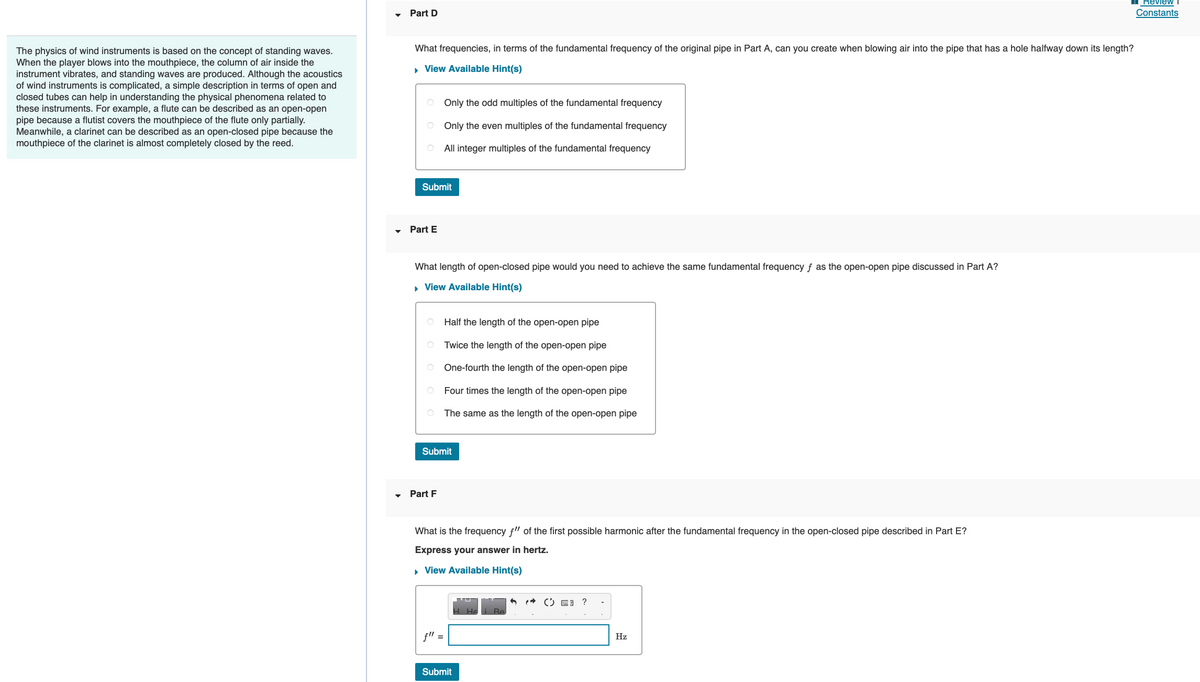What frequencies, in terms of the fundamental frequency of the original pipe in Part A, can you create when blowing air into the pipe that has a hole halfway down its length? ▸ View Available Hint(s) Submit Part E Only the odd multiples of the fundamental frequency Only the even multiples of the fundamental frequency All integer multiples of the fundamental frequency What length of open-closed pipe would you need to achieve the same fundamental frequency f as the open-open pipe discussed in Part A? ▸ View Available Hint(s) Half the length of the open-open pipe OTwice the length of the open-open pipe One-fourth the length of the open-open pipe Part F Four times the length of the open-open pipe The same as the length of the open-open pipe Submit What is the frequency f" of the first possible harmonic after the fundamental frequency in the open-closed pipe described in Part E? Express your answer in hertz. ▸ View Available Hint(s) (? Hz
Properties of sound
A sound wave is a mechanical wave (or mechanical vibration) that transit through media such as gas (air), liquid (water), and solid (wood).
Quality Of Sound
A sound or a sound wave is defined as the energy produced due to the vibrations of particles in a medium. When any medium produces a disturbance or vibrations, it causes a movement in the air particles which produces sound waves. Molecules in the air vibrate about a certain average position and create compressions and rarefactions. This is called pitch which is defined as the frequency of sound. The frequency is defined as the number of oscillations in pressure per second.
Categories of Sound Wave
People perceive sound in different ways, like a medico student takes sound as vibration produced by objects reaching the human eardrum. A physicist perceives sound as vibration produced by an object, which produces disturbances in nearby air molecules that travel further. Both of them describe it as vibration generated by an object, the difference is one talks about how it is received and other deals with how it travels and propagates across various mediums.

Trending now
This is a popular solution!
Step by step
Solved in 3 steps









